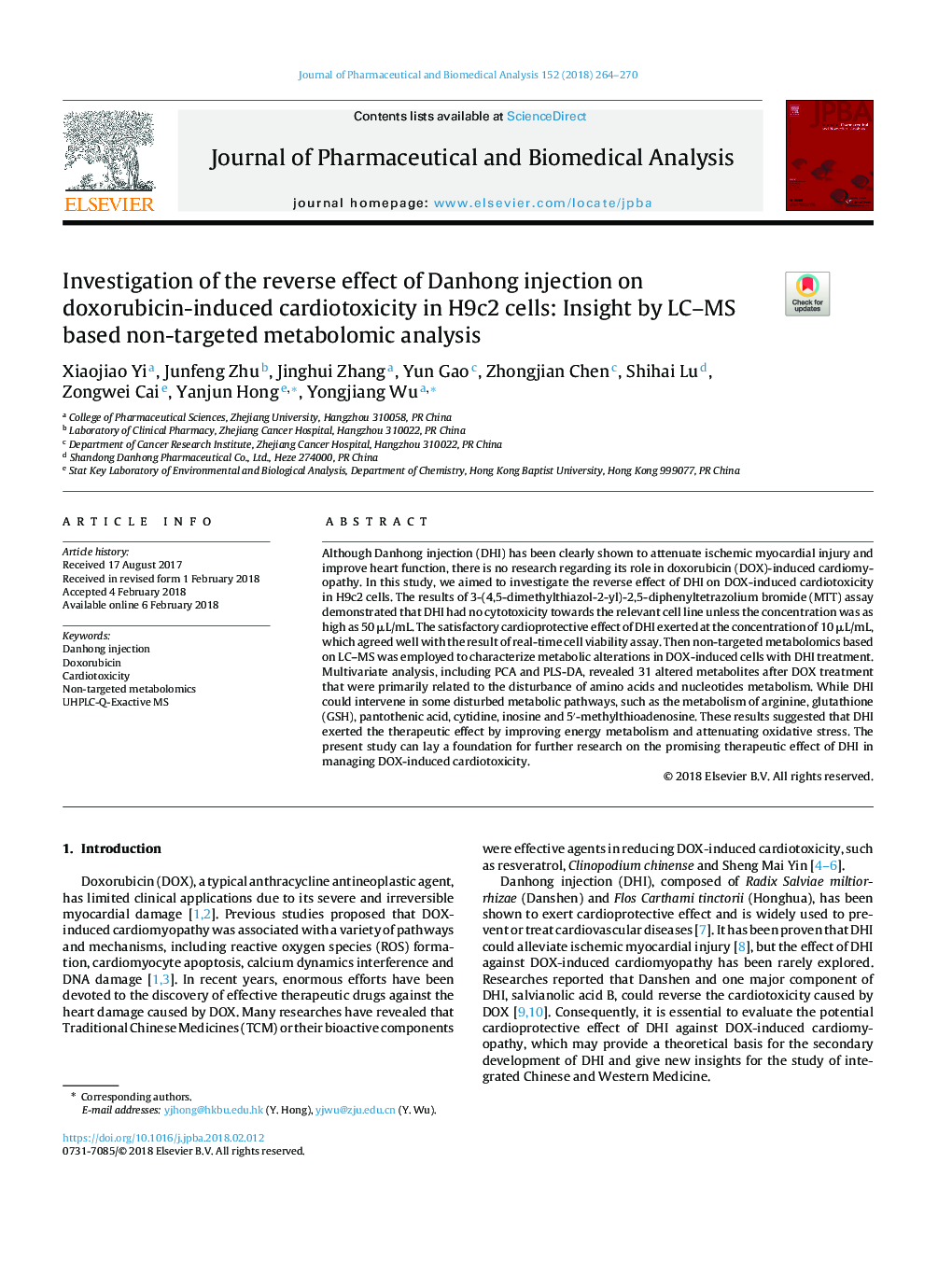| Article ID | Journal | Published Year | Pages | File Type |
|---|---|---|---|---|
| 7627048 | Journal of Pharmaceutical and Biomedical Analysis | 2018 | 7 Pages |
Abstract
Although Danhong injection (DHI) has been clearly shown to attenuate ischemic myocardial injury and improve heart function, there is no research regarding its role in doxorubicin (DOX)-induced cardiomyopathy. In this study, we aimed to investigate the reverse effect of DHI on DOX-induced cardiotoxicity in H9c2 cells. The results of 3-(4,5-dimethylthiazol-2-yl)-2,5-diphenyltetrazolium bromide (MTT) assay demonstrated that DHI had no cytotoxicity towards the relevant cell line unless the concentration was as high as 50â¯Î¼L/mL. The satisfactory cardioprotective effect of DHI exerted at the concentration of 10â¯Î¼L/mL, which agreed well with the result of real-time cell viability assay. Then non-targeted metabolomics based on LC-MS was employed to characterize metabolic alterations in DOX-induced cells with DHI treatment. Multivariate analysis, including PCA and PLS-DA, revealed 31 altered metabolites after DOX treatment that were primarily related to the disturbance of amino acids and nucleotides metabolism. While DHI could intervene in some disturbed metabolic pathways, such as the metabolism of arginine, glutathione (GSH), pantothenic acid, cytidine, inosine and 5â²-methylthioadenosine. These results suggested that DHI exerted the therapeutic effect by improving energy metabolism and attenuating oxidative stress. The present study can lay a foundation for further research on the promising therapeutic effect of DHI in managing DOX-induced cardiotoxicity.
Related Topics
Physical Sciences and Engineering
Chemistry
Analytical Chemistry
Authors
Xiaojiao Yi, Junfeng Zhu, Jinghui Zhang, Yun Gao, Zhongjian Chen, Shihai Lu, Zongwei Cai, Yanjun Hong, Yongjiang Wu,
